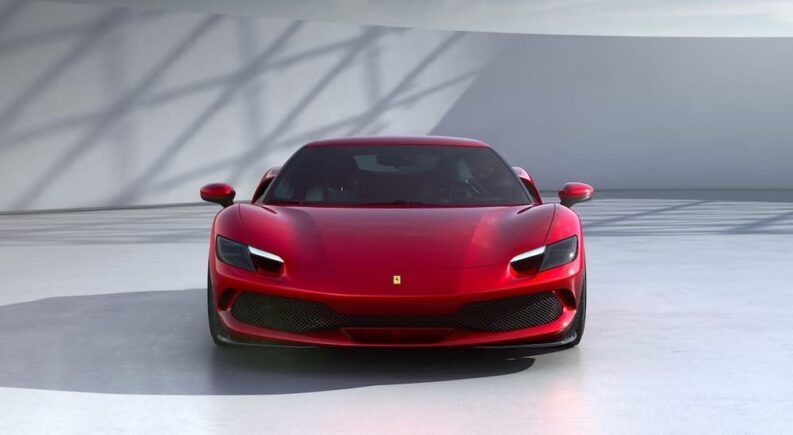When the first hybrid hit the US market in the early 2000s, it was difficult to envision a day when these automotive chimeras would come to infiltrate the highest levels of motorsport. That original hybrid, the 2001 Toyota Prius, wasn’t exactly race-ready with its 1.5L I-4 engine, 114 horsepower, and a zero-to-60-mph time of 13 seconds. For most early hybrid drivers, that was a small price to pay for the compact’s combined fuel economy of 49 mpg.
Hybrid powertrains have come a long way since then. While it’s certainly unfair to compare a production-level compact to the $14 million feat of modern engineering that is a Formula One car, it does shed some light on the hybrid’s appeal. Take Lewis Hamilton’s Mercedes-AMG F1 W14 E Performance model, for example. Despite producing up to 1,000 horsepower and tearing from zero to 60 mph in just over two seconds, Hamilton’s F1 car actually sports a gas engine that’s just 0.1 liters larger than the original Prius. Sure, it’s also got two extra cylinders, a turbocharger, two electric motors, and has been designed by some of the industry’s sharpest engineering minds, but it goes to show just how hybrids took over the highest levels of motorsports.
From Formula One and the FIA World Endurance Championship (WEC) to the World Rally Championship (WRC), the international motorsports community has steadily adopted hybrid technology over the last decade. The trend started in 2012 when WEC made hybrids mandatory for all competitors in the series’ top-tier LMP1 class. Formula One followed suit in 2014, and WRC was the latest top-flight racing series to join the party, switching to a hybrid system in 2022.
What’s with the switch? Is it really producing better, more exciting races? Or is it just a clever marketing ploy on the part of some of the auto industry’s biggest brands? In truth, it’s a little bit of both. Read on as we dive into the world of hybrid motorsports and see how this technology has steadily reshaped some of the world’s top racing series.
Smashing Records
Formed in 2012 to replace the Intercontinental Le Mans Cup, the FIA World Endurance Championship (WEC) is motorsport’s foremost endurance racing competition. The highlight of the WEC season is the famed 24 Hours of Le Mans race, which has long served as a proving ground for some of history’s greatest cars like the 1966 Ford GT40, 1995 McLaren F1 GTR, and 1970 Porsche 917. The WEC has embraced hybrid technology since its earliest days, with the technology powering the series’ Hypercar division and serving as a proof-of-concept for other top-tier racing series looking to make the switch.
One only needs to look at the record books for the 24 Hours of Le Mans to see the impact hybrid cars have had on the competition. The Porsche 919 Hybrid and Toyota TS050 Hybrid are tied for third-most wins of all time, and the word “hybrid” can be found splashed across the entries for fastest lap and highest average lap speed. Sure, hybrids have a ways to go when it comes to closing the gap with pure gas engines, which have racked up 73 wins between 1923 and 2005, but they still rank a solid second, surpassing the diesel engines used between 2006 and 2011 with nine wins. Toyota’s latest entry, the GR010 Hybrid Hypercar, is a prime example of the hybrid advantage. Powered by both a 3.5L V6 turbo engine and a hybrid electric system, the race car can churn out 670 horsepower with ease.
Formula One took a more gradual approach to hybrid adoption, first introducing a Kinetic Energy Recovery System (KERS) as an optional feature in 2009. Essentially a high-octane version of the regenerative braking systems found in many of today’s mass-produced hybrid and all-electric vehicles, KERS captures the energy from an F1 car’s braking system, converting it into electrical power that can be later used to boost acceleration. The KERS experiment was a success, leading F1 to adopt a full hybrid setup for the 2014 season. The results were instantaneous, with average horsepower immediately shooting up from 850 all the way to 1,000. The hybrid approach did have its detractors, specifically drivers who couldn’t master the new, faster cars and fans who pined for the noisy roar of the earlier 2.4L V8 models, but in most respects, it was a change for the better.
The F1 records for highest average lap speed, highest top speed, and shortest lap time have all been set by drivers in hybrid cars, specifically Lewis Hamilton and Valtteri Bottas. This speaks not only to Mercedes’ engineering dominance and driver skill but also to the natural advantage of the hybrid powertrain. Today’s F1 models actually use two electric motors dedicated to two specific jobs. The first, called the Motor Generator Unit-Kinetic (MGU-K), pipes power directly to the crankshaft, while the MGU-H (for “Heat”) is used to help power the turbocharger.
The World Rally Championship (WRC) is the latest premier motorsport series to adopt hybrid tech, with the new Rally1 hybrid replacing the outgoing World Rally Car model in 2022. The series stuck with its proven 1.6L turbocharged engine but supplemented it with a new 100-kW electric motor that gives WRC racers access to more than 500 horsepower. The hybrid system can be used when navigating a course’s 100-percent electric zones or deployed to give the engine a 100kW boost during special stages. This boost can also be engaged in three different ways, allowing drivers and racing teams to make specific boost patterns for various road conditions like ice, gravel, and tarmac.
The hybrid approach makes a lot of sense for the WRC, especially when one considers the environmental impact. While F1 and WEC races are generally run on expansive asphalt race tracks, WRC is a lot closer to nature, with the typical rally stage weaving through dense forests, deserts, or snow-covered hills. With lower emissions than previous WRC models, these hybrid racers can help to address sustainability and, in the words of WRC Managing Director Jona Siebel, “create an environment where both fiercely competitive motorsport and the planet can thrive together.”
Why the Switch?
In truth, the answer is simple. Despite some pro-petrol bias amongst longtime petrol heads, performance rules the day when it comes to the world of motorsport. Any technology that can help to create a better, faster, and more thrilling racing experience is bound to find a place in some of the world’s most storied paddocks. The hybrid advantage largely comes down to an electric motor’s ability to deliver instant torque that can make all the difference when accelerating from a dead stop or shaving crucial milliseconds off a lap time. Hybrid powertrains are also more adept at energy management, which can be largely credited to regenerative braking. Even the smallest boost can mean the difference between a checkered flag and a disappointing finish, and hybrid technology is simply too tempting to ignore in this respect.
Performance and pure speed aren’t the only reasons manufacturers have embraced hybrids in their racing programs. These gas-electric models also serve as a real-world testing ground for new and emerging automotive technology. Take the WEC’s Porsche 919 Hybrid, for example. The hybrid, which Porsche has called “the most complex Porsche race car ever,” not only utilizes a regenerative braking system but also employs a unique approach that allows the car to generate electricity through its exhaust gasses. While this technology is currently better suited to a 900-horsepower race car than one of Porsche’s production models, it’s just one example of how today’s hybrid racers could inspire a new era in hybrid design.
Integrating hybrid models into motorsport also serves as a real marketing advantage, allowing brands to showcase the benefits of the approach and boosting sales of their production-level hybrid models. “We are in the transformation, or transition, into the electric world,” said Andreas Roos, head of BMW M Motorsport. “This is the perfect fit to be in parallel between our road car development and our racing. It’s very important that we have a road-car relevance, and this is a perfect match.”
It’s already worked a treat at Ferrari, where hybrid sales recently surpassed pure internal combustion models for the first time in 2023. The Italian automaker reported that 51 percent of its sales between July and September were hybrid models, compared to just under 20 percent the year before. The Ferrari 296 GTB and GTS supercars were the top sellers, with the high-end SF90 hybrid rounding out sales. One could probably credit F1 stars like Charles Leclerc and Carlos Sainz Jr. for at least part of this sales bump, especially given the drivers’ impressive finishes in the 2023 season.
Finally, there are the environmental benefits. The hybrid powertrains used in today’s F1, WRC, and WEC cars might still rely on gas to get around the track, but they consume fuel about as efficiently as possible. While the average gas-burning engine hovers between 30 and 35 percent efficiency, some of today’s hybrid race cars have been known to surpass the 50 percent mark. That’s some impressive efficiency, but it’s only one part of an increasing focus on sustainability in the world of motorsport. Formula One has pledged to switch to carbon-neutral synthetic fuel by 2026, capturing CO2 from the air and mixing it with hydrogen to produce a new kind of Earth-friendly fuel.
In 2015, automotive journalist Joe Clifford powered a Toyota Prius TRD to a 20:59 lap on Germany’s infamous Nürburgring Nordschleife. The writer certainly didn’t set any records with an average speed of 43 mph, but he also only used around five tablespoons of fuel and averaged around 698 MPG while completing the 12.9-mile lap. While that’s a little slower than the official record of 5:19 by WEC driver Timo Bernhard, the two racers have one thing in common: they were both driving hybrid models, with Bernhard setting the record in a Porsche 919 Hybrid Evo. While all-electric powertrains could eventually come to replace hybrid designs, one thing is for sure: pure internal combustion is not part of the sport’s future. There are simply too many advantages to hybrid and electric designs, especially when one considers the performance, marketing, and environmental benefits. Some old-school race fans might pine for those obnoxious, ear-splitting days at the track, but as long as the top speed keeps increasing and races become more exciting, hybrid technology is here to stay.




